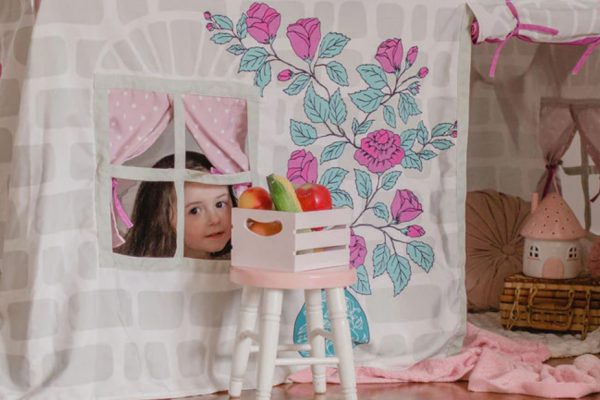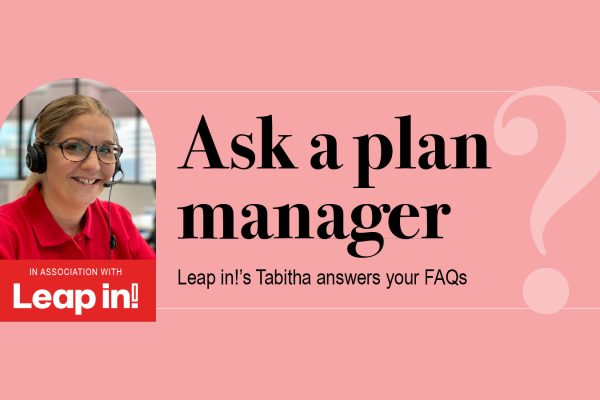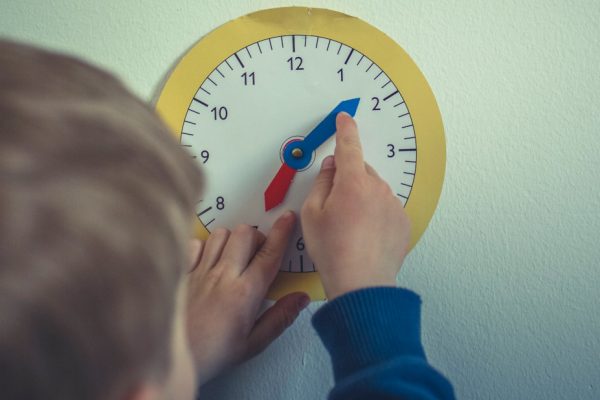
Maintaining and developing skills during the summer break
A physiotherapist, speechie and OT have provided us with some fantastic activity ideas to keep our kids skills up if they’re taking a break from therapy and school over the summer. All the ideas are such good fun your child won’t even realise they’re working!
SPEECH AND LANGUAGE, BY KYLIE MARTIN
FIND A PEN PAL
Writing on the holidays can seem like a chore but for many kids who have difficulty with reading, writing and spelling, consistency is key. Six weeks is a long time to neglect the skills of thinking, sounding out, writing and reviewing and sometimes our kiddies feel like they are starting all over again when they get back to school. Why not exchange addresses with the families you meet in the caravan park, unit complex pool or holiday club and keep those literacy skills going in a fun and friendly way.
MAKE AND DO
Staying with literacy….. why not Google a “How to” project. You can practice
reading the instructions, then when you know what you need to buy have
your child write a shopping list. A younger child could find all the items in the
junk mail catalogues. Why not set up your own shop and roleplay. You get to
practice greetings and farewell, social communication skills, requesting and
listening skills and money skills. Once you have completed the project, set up
the phone/tablet/other electronic device and record your child retelling how
they did it. This is great for memory, expressive language skills, sequencing and
story-telling.
SECRET SOUND SANTA
What about writing a letter on each door of an Advent calendar and make that your letter of the day. This activity is great for kids with speech sound errors, phonological delays and auditory processing difficulties. Each day, talk about the sound the letter of the day makes. What are the features of the sound? Is it loud or soft? Long or short? Think about which part of our mouth do we use to make to sound. The letter M makes this sound mmmmm. It is a loud sound, a long sound. You use both of your lips to make the sound and the sound comes out of your nose. You could colour the parts of the mouth used to make the sound on a picture of Santa or Rudolf or even Frosty the Snowman. Throughout the day, try to spot items that start with that sound. You can keep points and give double points for any words that are related to Christmas. (Mary, Mistletoe and Moet would all score 2 points!)
AAC WITH ME
If your child is getting a special something for Christmas, why not set their talker up with related vocabulary the night before so that they can talk about their toys straight away. Think about what they would say, what they would ask, how they would express their joy if they could and make it so they can. Spend some time playing, using the device and modelling the new language skills and opportunities. You could also put some of the special gifts their siblings are receiving on as well to facilitate the natural celebration and conversation that we all enjoy on Christmas morning.
HOLIDAY JOURNAL
So many people will ask your child what they did in the holidays; where they went and what they got for Christmas. Teachers will ask, therapists will ask, relatives will ask, other kids will ask and there’s nothing worse for the child than not being able to think of something on the spot. Grab your camera (better yet, give it to your child) and take a photo of each meaningful event and activity that you do. Print them out, stick them in a book and write a short thought about each thing. You can review the book at the end of each day to build memory and language skills. Try working through the wh questions (Where is it, who was there, when did we go, what did we do, why did/didn’t you like it?). Then jump online and print out a copy of Blanks levels of questions and use them to talk about the day’s activities. Practice answering all those “holiday” questions together and maybe even build a little script for your child to use. You could look at the book in the car before going into school or a therapy session so that the ideas are fresh in your child’s mind or you could take the book in with you and your child can use it as a conversation prompt.
Kylie Martin is a speech pathologist at Chatter-boxes Speech Pathology Services. For advice or information on speech and language development, play, feeding or social communication visit www.chatter-boxes.com.au or call 07 5444 2451 | email – [email protected]
OCCUPATIONAL THERAPY BY HAYLEY HUGHES
GET CRAFTY
Art and craft activities are a great way for children to work on their fine motor skills over the summer break. Children can build the strength and coordination of the muscles in their hands and fingers through snipping with scissors, tearing tissue paper, painting, sprinkling glitter, using stamps, threading beads and peeling stickers. Activities that encourage use of the thumb, index and middle finger together are particularly beneficial, as we tend to use these fingers for a functional pencil grasp.
The school holidays provide the perfect opportunity for Christmas crafts. Why not try making a Christmas card or ornament for the Christmas tree? Writing a letter to Santa is another fun way to practise handwriting or typing skills over the holidays.
SCIENCE EXPERIMENTS
Asking your child to practice their handwriting over the holidays may seem
like a daunting task. However, adding a functional reason for writing can be an effective way to boost your child’s motivation to practice. Writing the steps to a science experiment can add some fun into handwriting practice.
Ideas for quick and easy experiments to google are baking soda and vinegar volcanos, slime recipes, DIY lava lamps, invisible messages and a balloon hovercraft.
Before you start your project it can be helpful to consider what you would like your child to work on during their writing practice. For instance, is the main goal to work on the formation of letters, the spaces between words, writing along the lines or spelling. Having one main goal and providing a model of the writing can be a helpful strategy.
COOKING
Getting kids involved in the kitchen is another activity that can help your child to work on a range of skills. Skills that can be practiced through cooking include:
- – Typing or writing out the recipe. Choosing a recipe to type or write provides a functional and fun reason to practice typing and/or writing skills.
- – Rolling dough, chopping, sprinkling and using tongs all require your child to use their fine motor skills.
- – Counting, measuring ingredients and setting timers are all functional skills your child can practice in the kitchen. The Kiddie Food Kutter is a helpful tool to use for kids in the kitchen. The knife can cut through fruit and vegetables using a sawing motion, but is safe for children to use (kiddiesfoodkutter.com.au).
MAKE YOUR OWN MOVIES
Helping your child to be the director/actor in their own movie can be a great way to practice different social skills. Studies have shown that video modelling is an effective strategy to support children to learn a range of skills. Try using dress-ups or your child’s favourite toys in the movie.
It can be helpful to think about the specific skill your child is working on (e.g. whole-body listening, taking turns, keeping personal space). Writing a script that demonstrates that skill prior to pressing record can be useful in keeping the movie on topic.
The iModeling app is a useful tool for creating and editing your movies (search iModeling on the App store)..
SENSORY TRAYS
Sensory trays enable your child to gain sensory input whilst working on a variety of skills. It can be helpful to think about the textures your child prefers and use these textures to fill your sensory tray. You can encourage your child to interact with new textures through using different household items (e.g. paintbrush, spoon, measuring cup).
A couple of ideas for sensory trays are:
SHAVING CREAM
Fill your tray with shaving cream to trace shapes, faces and write numbers and letters. Having a paintbrush on hand can be helpful if your child is wary of the shaving cream texture.
RICE TRAY
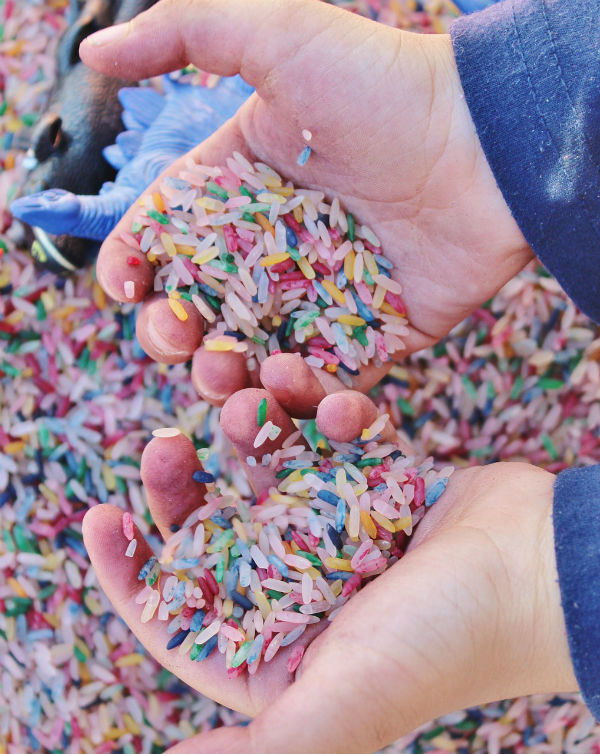

Using a rice tray is another entertaining way to work on fine motor skills. Scoop and pour rice into containers and colanders. Try a treasure hunt by hiding different figurines in the rice. You can use tongs or spoons to find the figurines. To add to the sensory experience, try making rainbow rice using vinegar and food colouring.
Hayley Hughes is an Occupational Therapist at Tools 4 Life. Visit www.tools4lifeot.com or www.facebook.com/tools4lifeot/ to learn more about how Tools 4 Life can support your child. | ph 0429 165 488
PHYSIOTHERAPY BY EMILY HAYLES
SWIMMING OR OTHER MOVEMENTS AND PLAY IN THE WATER
Moving or playing in the water is a great and fun activity for children with movement difficulties and has numerous benefits:
- It takes some of their body weight – this means that your child should be able to do things in the water that they cannot do on land, such as walking, jumping, going up and down steps, or running.
- It provides resistance to movements, which can help to strengthen your child’s muscles – you can strengthen their arms by asking your child to push or pull their arms or floating toys through the water, and you can strengthen their legs by getting them to walk or run through the water, or kick their legs (and you can add flippers for even more resistance!)
- It can help to relax tight muscles – the pressure and warmth of water, as well as the ability to move more freely in water can help your child to relax tight or stiff muscles.
- It can help them to practice their balance skills – the water around their body provides additional support enabling your child to hold themselves upright and balance for longer. This means that your child might be able to do things they find difficult on land, such as standing on one leg. In addition, the movement of the water around them can challenge their balance – swish some water around them and see if they can hold themselves upright.
WALKING AT THE BEACH
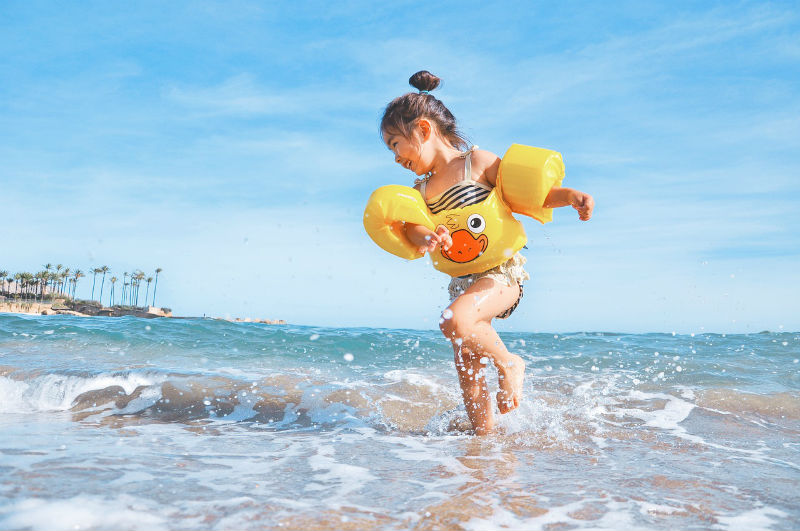

If you have ever gone for a walk or a run at the beach, you will understand how much harder it is than walking around your usual neighbourhood! Sand is unstable under your feet, which requires more strength, balance and coordination to walk (or crawl) on.
Walking on soft sand is much harder than walking on hard sand. So if your child is finding it difficult to walk on soft sand, move them closer to the water’s edge to help them to succeed.
And remember, it’s not just walking on sand that is harder so, why not give some bear walks, crab walks, crawling or jumping on sand a try – the options are endless!
WATER SLIDES
Water slides – whether they be the big water park or the at home DIY variety – can be great for your child’s physical development.
Climbing up the many steps to get to the top of the water slide will help to strengthen your child’s legs, practice going up stairs (if this is something they find difficult), as well as give them (and you!) a good cardiovascular workout! Then sliding down the slide will give them some great vestibular input as they slide forwards and turn the corners. Finally, at the bottom, when they land in the water, your child will have to right themselves again to get up and out of the water, challenging their balance and transitions from sitting to standing.
If you don’t have a local water park you can go to, you can try these options at home:
- Water running down the slippery slide (make sure your child is supervised going up the ladder as it will be wet and therefore be more slippery than usual!)
- Set up a ‘slip-n-slide’ with some plastic or tarp down a hill. Walking up the hill after every slide down will be great for your child’s leg strength!
DECORATING THE CHRISTMAS TREE
Decorating the Christmas tree – particularly the baubles and hanging decorations – can give your child an amazing opportunity to practice bending down or squatting down to the floor, standing up from a squatting position, and also reaching above their head.
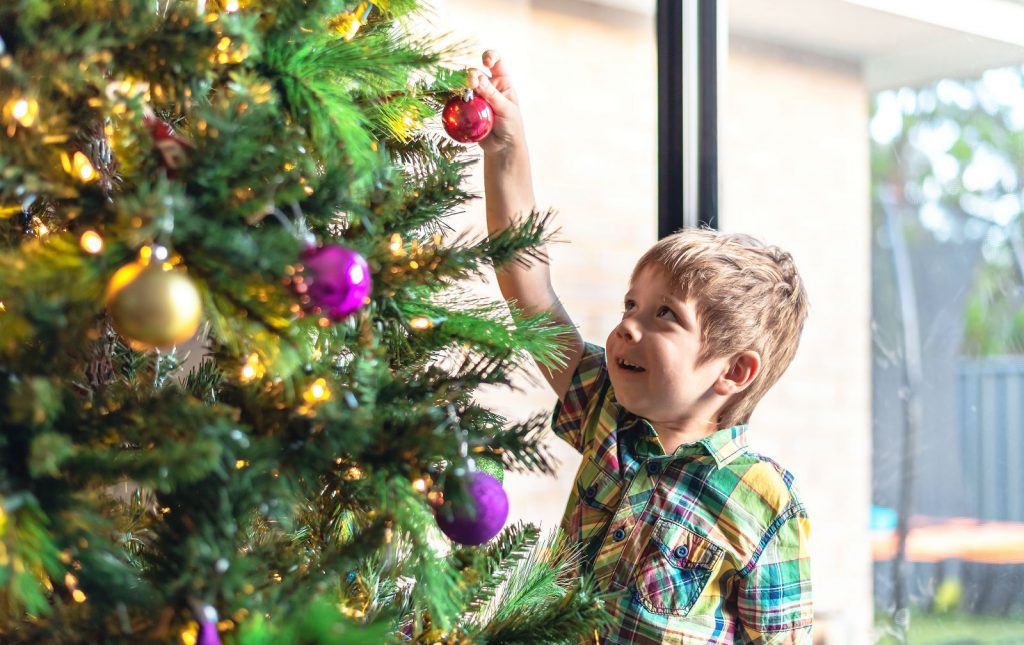

When you get all the decorations out, put them all on the floor. This will encourage your child to squat down to pick them up before then putting them onto the tree. If your child has trouble squatting or reaching all the way down to the floor, then you can put them onto a low foot stool. Then, when putting the decorations on the tree, encourage your child to reach their arm up high to get to the higher branches. This is a great way to practice reaching high into the air, or alternatively encouraging them to rise onto their toes.
And if your child is little and they start pulling the decorations off again – rather than getting annoyed, you can now think of this as another opportunity to practice squatting, standing and reaching.
Emily Hayles is the principal physiotherapist and owner of Move and Play Paediatric Therapy, a multidisciplinary children’s therapy service based in Mackay, Queensland, as well as the author of ‘Braver than you think: How to help your child with a disability live their best life’.
Ph: (07) 4942 9343 |Email: [email protected] www.moveplaypaedtherapy.com.au
Facebook: facebook.com/moveplaypaedtherapy
Instagram: @moveplaypaedtherapy




